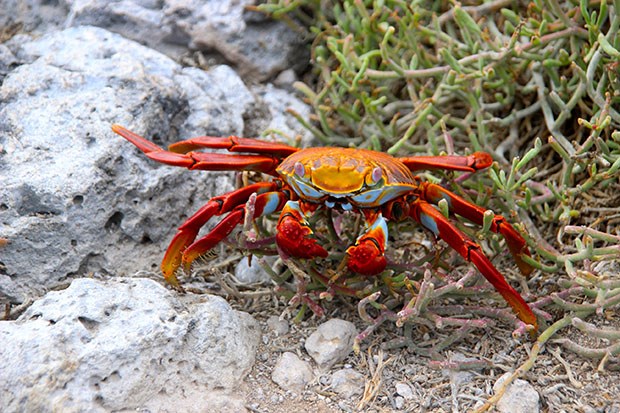A UNESCO protected eco reserve and outside of the poppy seed, probably Ecuador's most lucrative treasures, the Galapagos Islands offer a truly once-in-a-lifetime experience.
Getting here is not inexpensive, and since the volcanic archipelago is scattered over 45,000 square kilometres (17,000 square miles) of equatorial ocean, cruising becomes part of your package.
Small cruise vessel operators proliferate, your best value being five- to seven-day itineraries with mid-priced outfitters like Ecoventura, whose vessels carry snorkelling gear, wetsuits, kayaks and park-certified naturalists.
As the muse and inspiration for both Charles Darwin's evolutionary theory and many a Discovery Channel documentary, nothing prepares you for the eyeball intimacy - not to mention their hoary breath - of meeting the islands' wildlife for real. Every encounter, whether above or below the water, is met with nonchalance, vague curiosity or is totally ignored.
And therein lies the joy.
Sea lions are a tour de force here, whether snoozing on a side bench, lolling over one another on a sandy shore or staring in your snorkel mask. Then there are the Sally Lightfoots, flame-red crabs that scuttle across the lava rocks. Apparently, they are named either after a florid Caribbean dance or an unfaithful wife, the latter being a far more colourful story.
Multi-hued iguanas are plentiful too, as are Darwin's famed finches, bright yellow warblers, gregarious Hood mockingbirds that'll peck at your shoelaces and huge, pterodactyl-looking frigate birds that hang overhead and nest in the branches of scrubby trees.
Watching the courting ritual of the blue-footed booby is a treat - tap dancers could take a few pointers of their stomping powder-blue feet that lead into a flamboyant courting ritual.
The Waved Albatross, however, takes the trophy for romantic showmanship with its beak clacking, bowing and oh-so-boastful wing antics. The birds only take to land between April and December, gathering on Espanola Island to find their lifelong mate, nest and train their offspring for many weeks at sea.
Lift off, however, isn't easy. Weighing in at two to five kilograms (seven to 11 pounds), and having a wingspan of up to 2.5 metres (eight feet), naturalists believe they flock to this particular island because of its high cliffs. The only way the birds are able to get airborne is to take a running leap off the edge in the assumed hope their massive wings will catch the currents.
Look a little closer and you'll see why they have inspired many an aerospace design, especially of drones and unmanned aircraft.
Because the park regulates every itinerary, nearly every schedule includes a visit to the Charles Darwin Research Station on Santa Cruz Island, one of two tourist-oriented centres (along with Baltra and San Cristobal) that offer a handful of hotels, souvenir shops, restaurants, WiFi-friendly coffee shops and boutiques.
Home to more than 100 international scientists, educators and conservationists, the research centre is probably most noted for its captive giant tortoise-breeding program. Pirates and poachers once hunted these 270-kilogram (600-pound) beauties to near extinction but today they are making a comeback and if you head for the lush highlands, chances are you'll see many a tortoise roaming through the tall grasses.
Sadly, the centre's most celebrated guest, Lonesome George, passed on in 2012 at a reported age of around 120. During his lifetime, he was considered the rarest creature in the world, and his memorial plaque is almost as big a draw for visitor pictures as Lonesome himself once was.
Travel Writers' Tales is an independent newspaper syndicate that offers professionally written travel articles to newspaper editors and publishers. To check out more, visit www.travelwriterstales.com.


